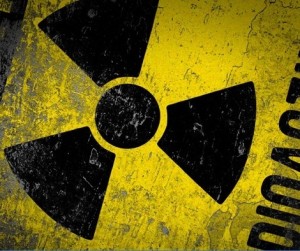Tokyo Electric Power Co. (TEPCO) said on Aug. 1 that it had detected radiation doses exceeding 10 sieverts per hour, the highest level of radiation measured since the outbreak of the crisis at the Fukushima No. 1 Nuclear Power Plant, outside the buildings for two reactors -- a new discovery that could hamper efforts to bring the troubled reactors under control.
The dosage, which exceeded the capacity of measuring equipment, was detected near the surface of an exhaust pipe between the No. 1 and 2 reactors at the Fukushima nuclear complex, said TEPCO, the operator of the crippled nuclear facility. People risk death if they are exposed to radiation doses of 10 sieverts per hour, or 10,000 millisieverts. The high levels of radiation mean that a person could be exposed to 250 millisieverts of radiation -- the upper limit set by the government for workers engaged in restoration work at the Fukushima plant -- within 90 seconds.
The utility firm said it had made the area within a radius of several meters from the trouble spot off-limits and that it was going to shield the area with steel plates and the like. The utility said the radiation doses would not affect restoration work. But if similar doses were found elsewhere on the premises of the nuclear plant, it could affect the efforts to bring the nuclear reactors under control.
Therefore, TEPCO needs to rigorously check to see whether high radiation doses are spreading elsewhere and thoroughly control radiation at the nuclear plant to prevent workers from being exposed to dangerous levels of radiation. Three plant workers, who were checking radiation levels after finishing their work to remove debris, confirmed the radiation doses at about 2:30 p.m. on Aug. 1.
The exhaust pipe where the radiation doses were detected is used in the event of an emergency to release gas from reactor containment vessels. Steam containing high levels of radioactive substances may have remained in the pipe after TEPCO vented steam from the No. 1 reactor on March 12 in an attempt to protect the reactor containment vessel. Radioactive particles may have also adhered to the outside of the pipe. The exhaust pipe is not in use now. Previously, radiation of 4,000 millisieverts -- the then highest level of radiation since the outbreak of the nuclear crisis -- had been detected on the first floor of the reactor building of the No. 1 nuclear reactor.
The three workers who measured the radiation doses on Aug. 1 were exposed to radiation of up to an estimated 4 millisieverts. TEPCO also said few workers had been working near the trouble spot and that it had not found any workers who were exposed to massive radiation.
In a related development, TEPCO said on Aug. 2 that there were two more pipes nearby that apparently showed radiation in excess of 10 sieverts. The utility said it had not actually measured the radiation there and it had no plans to do so because there would be no one working there.
(Mainichi Japan) August 2, 2011









No comments:
Post a Comment